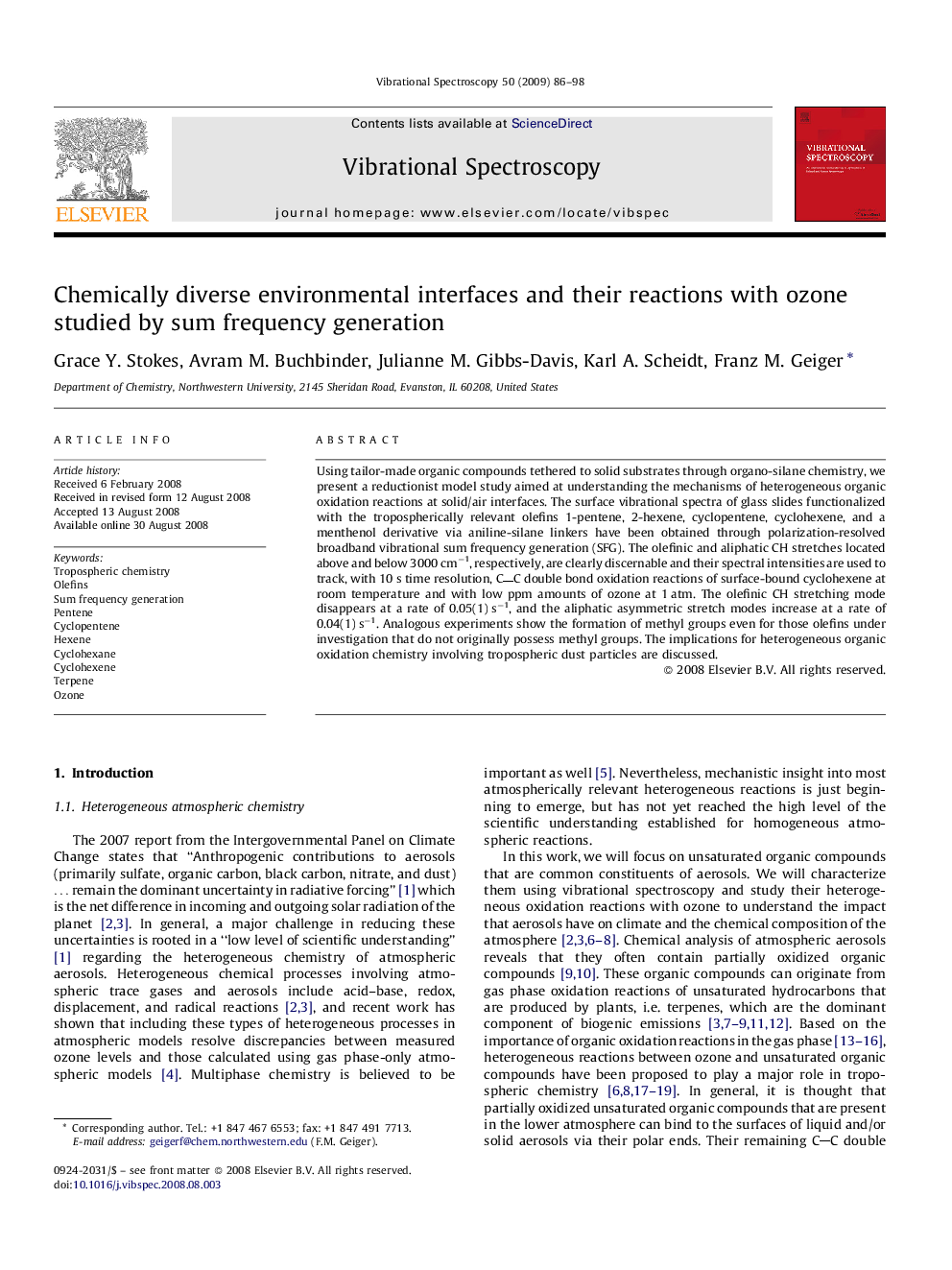| Article ID | Journal | Published Year | Pages | File Type |
|---|---|---|---|---|
| 1250780 | Vibrational Spectroscopy | 2009 | 13 Pages |
Using tailor-made organic compounds tethered to solid substrates through organo-silane chemistry, we present a reductionist model study aimed at understanding the mechanisms of heterogeneous organic oxidation reactions at solid/air interfaces. The surface vibrational spectra of glass slides functionalized with the tropospherically relevant olefins 1-pentene, 2-hexene, cyclopentene, cyclohexene, and a menthenol derivative via aniline-silane linkers have been obtained through polarization-resolved broadband vibrational sum frequency generation (SFG). The olefinic and aliphatic CH stretches located above and below 3000 cm−1, respectively, are clearly discernable and their spectral intensities are used to track, with 10 s time resolution, CC double bond oxidation reactions of surface-bound cyclohexene at room temperature and with low ppm amounts of ozone at 1 atm. The olefinic CH stretching mode disappears at a rate of 0.05(1) s−1, and the aliphatic asymmetric stretch modes increase at a rate of 0.04(1) s−1. Analogous experiments show the formation of methyl groups even for those olefins under investigation that do not originally possess methyl groups. The implications for heterogeneous organic oxidation chemistry involving tropospheric dust particles are discussed.
